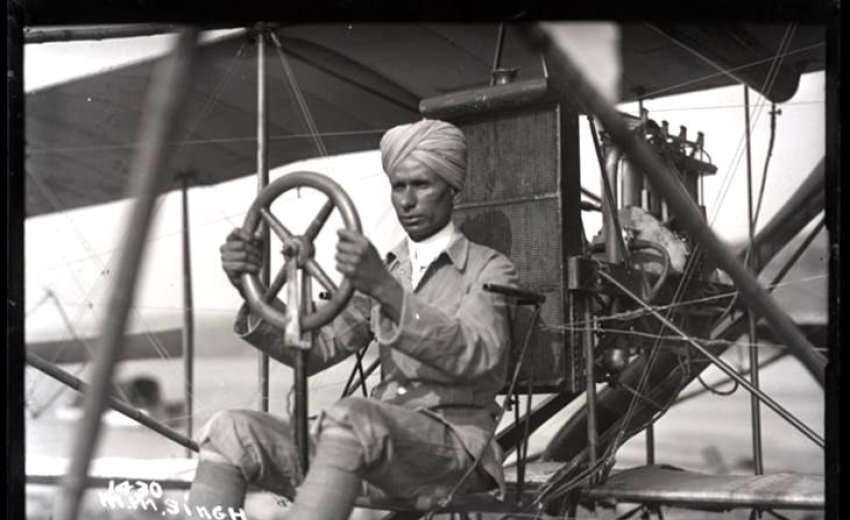Back in April 2012, a young Indian named Mohan Singh enrolled in San Diego's Glenn Curtiss flying school. The school has students from as far as Poland and Japan. It was described as 'the most cosmopolitan gathering of flyers and pupils in history.’ Hailing from the village of Himmatpura in the Punjab region of present-day northwest India, he immigrated to the United States in 1906. He worked as a domestic helper in Chicago for several years before becoming fascinated with aviation and enrolled in the Curtiss school. After earning brevet #123 two years later, he became the first Indian to be licensed as a pilot.
Singh had an air of foreign mystery about him. His tall and gaunt figure, dressed smartly in a turban, added to the reputation of the institution. He rarely spoke or smiled and avoided meat and drank only water in form of Liquid. While he was on secondment from the British Indian Army, he claimed to be studying aviation. Journalists described him variously as a captain, a major, or an Indian prince; some said he was from Delhi, others from Bombay.
After securing his license, Singh performed for the Curtiss-Wright Aviators aerial circus, and was billed as the “Only Hindu Flyer in the World.” He traveled to Hammondsport, New York to learn how to fly the Curtiss hydroplane. As a result, when Lincoln J. Beachey came out of retirement and wanted to try one of the hydroplanes, the Curtiss camp suggested that he take Singh along instead of flying alone. As part of the lead-up to World War I, Singh was one of the few people not related to Glenn Curtiss who joined him to promote his goods across Europe in the lead-up to World War I in 1913.
Despite Singh's piloting skills and numerous connections, he never pursued a career as an aviator. After settling in Los Angeles in 1914, he became a butler and chauffeur for an affluent family and soon began the naturalization process of becoming an American Citizen. At the time, citizenship was only available to Caucasians. Indians at that time were not given citizenship in the USA. As the result of years of well-publicized legal battles, Singh gained American citizenship, only to have it stripped away in 1924 after the Supreme Court ruled that South Asians could not be considered White and therefore did not qualify for citizenship after all.
Singh’s statelessness gave him the impetus to assume a new identity. He assumed the name "Yogi Hari Rama," put on bright orange robes, and started teaching a combination of exercises and plagiarised materials that he rebranded as the "Super Yoga Science's" top-secret techniques. As Yogi Hari Rama, he toured the country, staying in more than two dozen cities for a few weeks to a few months at a time, and made a small fortune. Singh simply disappeared without a trace after his trip in 1928 was over, leaving behind 13 Americans whom he had appointed to teach Super Yoga Science and a national organization called ‘The Benares League of America’, the largest yoga organization in the country at the time.
Singh's legacy as a pioneering pilot has been preserved as little more than a forgotten footnote in the history of aviation. Studies on immigration have briefly discussed his battle for citizenship, and histories of yoga in America occasionally refer to Yogi Hari Rama in passing. Until now, no one has known that the figures behind these three lives were the same man. Even as Yogi Hari Rama, there was still some of the old pilot in him. Given his past as ‘The Flying Hindu’ and all of his time spent in the air, he did not entirely lie when he asserted to his many disciples of Super Yoga Science that he possessed the yogic gift of levitation. Nobody truly knows what happened to Mohan Singh, aka Yogi Hari Rama.He is a mystery both in life and after death.

